How to Set Up Neat Bar 2/Neat Board 50/Neat Board Pro for BYOD Mode
Last updated on December 2, 2025
While Neat devices deliver great experiences with Zoom Room and Microsoft Teams Room applications, we recognize that you may need to join meetings on other platforms. For these situations, BYOD Mode allows you to use Neat devices with any video service, while still benefiting from Neat’s advanced hardware and features.
This guide provides step-by-step instructions for enabling BYOD Mode on your Neat Bar 2, Neat Board 50 or Neat Board Pro. For instructions on other devices, see:
- Neat Bar + Neat Bar Pro – How to Set up your Neat Bar/Neat Bar Pro for BYOD Mode
- Neat Board – How to Set up your Neat Board for BYOD Mode
Warning: When running a Neat device in BYOD mode, the videoconferencing application installed during out-of-box setup (Zoom or Teams) is terminated. Because the application cannot communicate with its cloud, you may see the devices appear offline in your Zoom or Teams cloud admin portal. Connectivity to Neat Pulse is maintained during BYOD Mode.
Note: For customers who do not wish to run native applications such as Zoom or Teams, Neat devices offer the ability to run our BYOD application without downloading Zoom/Teams during our Out-of-the-Box (OOB) process, see the article BYOD Only Mode/App (with Neat Pad).
Contents
- 1. Requirements
- 2. Instructions
- 3. BYOD behavior
1. Requirements
- Personal Computer that supports HDMI-Out direct or through dongles
Single cable Setup:
- USB-C to USB-C cable or USB-A to USB-C cable (3.0 or higher)* that supports DisplayPort Alternate Mode (aka DP Alt Mode, and other names)**
Double cable Setup:
- USB-C to USB-C cable or USB-A to USB-C cable (3.0 or higher)* for camera and audio
- HDMI cable (existing content-share HDMI cable can be used for BYOD Mode) for video
*Note: Currently, BYOD Mode supports USB 2.0 High Speed (HS) data transfer rates due to temporary software limitations for both camera and audio data. Both passive and active optical USB C cables are acceptable as long as they maintain reliable USB 2.0 High Speed transmission. Some active optical cables are designed mainly for SuperSpeed (SS) and may include High Speed lines that are unreliable or outside specification. Even if such cables perform correctly over SuperSpeed with other devices, they can still cause camera or audio issues due to Neat devices currently only supporting USB 2.0 High Speed today. For future compatibility, choose a cable that also supports SuperSpeed.
** Important Note: The cable used must support DisplayPort Alt Mode when operating in single cable setups, since this same cable carries both the video input and the USB link for camera and audio. Not all USB C cables include DisplayPort Alt Mode support. Users should confirm that their cable explicitly supports DisplayPort Alt Mode. USB C cables certified for Thunderbolt 3 or higher are also compatible.
Warning: Be cautious when using USB C extenders or adapters because their ability to pass DisplayPort Alt Mode and USB 2.0 High Speed varies. When they are part of the installation, the complete signal path should be tested and verified.
2. Instructions
2.1 Accessing USB Connectivity and BYOD Mode
To access USB Connectivity and BYOD Mode, follow these steps:
- For Zoom: Go to Settings → General → System Settings
- For Microsoft Teams: Go to More → Settings → Device Settings
Then navigate to:
Neat System Settings → System → USB Connectivity
Here, you can select one of the following options:
- BYOD – Enables BYOD mode, which defaults to Manual BYOD Mode.
- Peripheral Devices – Default configuration where BYOD mode is disabled.
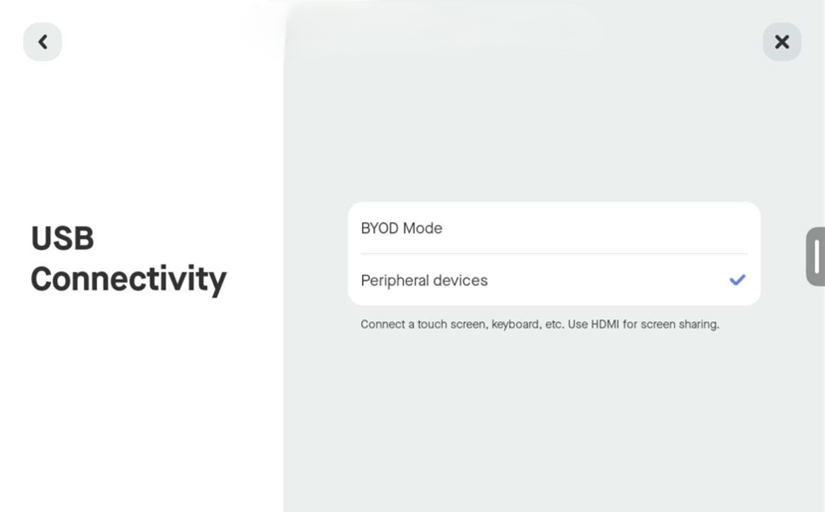
2.2 BYOD Mode Options
2.2.1 Manual BYOD mode
Manual BYOD Mode allows users to manually enable or disable BYOD mode directly from the Neat Pad using the slide-out menu (swipe from right to left).
When this mode is selected, a BYOD mode button will appear in the slide-out menu.
This mode is ideal for setups where a laptop remains connected to a Neat Bar or Neat Bar Pro via USB, allowing users to toggle BYOD mode as needed.
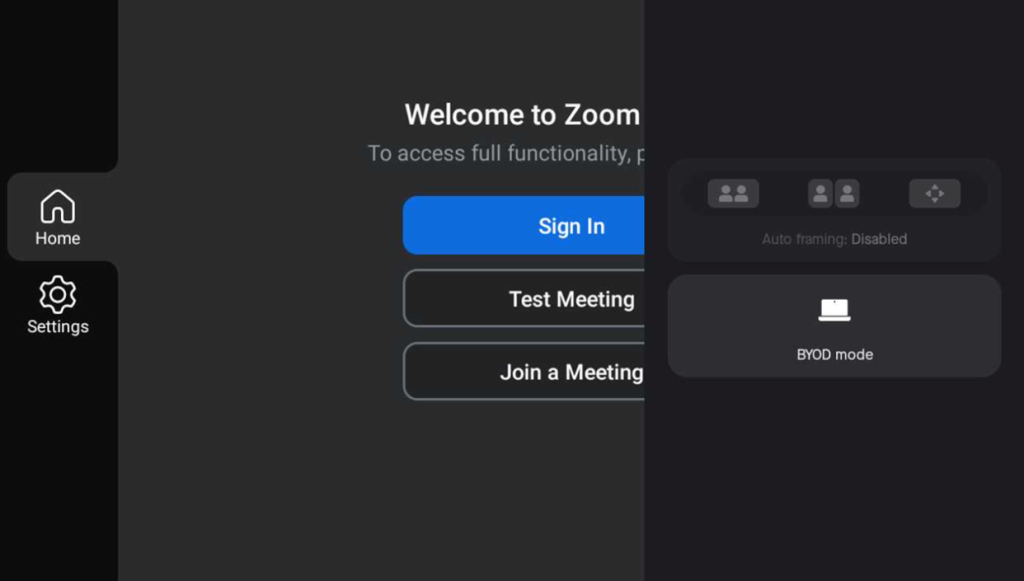
2.2.2 Automatic BYOD mode
To enable Automatic BYOD Mode, select Automatic BYOD Mode in the BYOD settings.
In this mode, USB passthrough functionality is fully automated. Once the Neat devices are wired correctly (as described in Section 2.3 Cable Setup), they will automatically function as USB-connected peripherals for a computer.
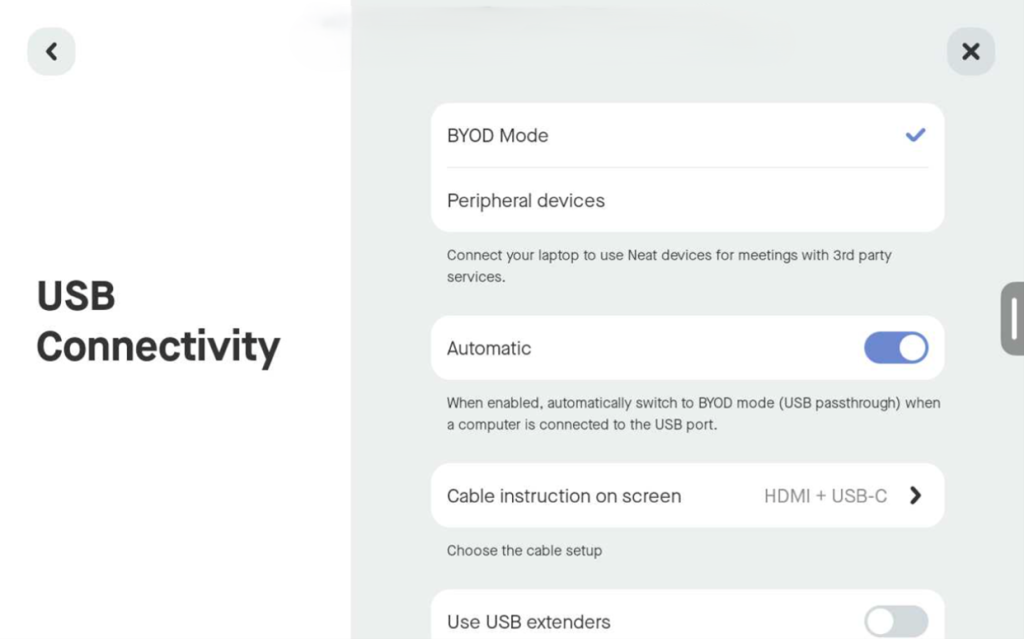
2.2.3 Peripheral devices
This mode indicates that BYOD mode is disabled but allows the USB connection to be used for peripherals such as a mouse or keyboard.
2.2.3.1 Audio over USB (Neat Board Pro only)
On the Neat Board Pro you will see the option to enable Audio over USB when Peripheral devices are selected. For more information on this feature please refer to Neat Board Pro Audio over USB.
2.2.4 USB extenders
This setting is designed for customer setups that use specific types of USB extenders for BYOD (Auto/Manual mode). Most USB extenders rely on a V-BUS line connection, which typically carries a 5V supply, to trigger the electrical components within a USB device. However, a small subset of extenders do not switch this power on or off based on the presence of a laptop. Instead, they send suspend commands when the laptop is disconnected or when the USB extender enters power-saving mode.
When the USB extender option is enabled, Neat devices will listen to the suspend command from the USB extender. When the toggle is off, the Neat device will instead rely on the V-BUS line connection to enable or disable BYOD mode.
2.3 Cable setup
2.3.1 Single cable set-up
- Connect a USB-C cable from the laptop to Neat Bar 2’s/Neat Board 50’s/Neat Board Pro’s USB-C port (Figure 4).
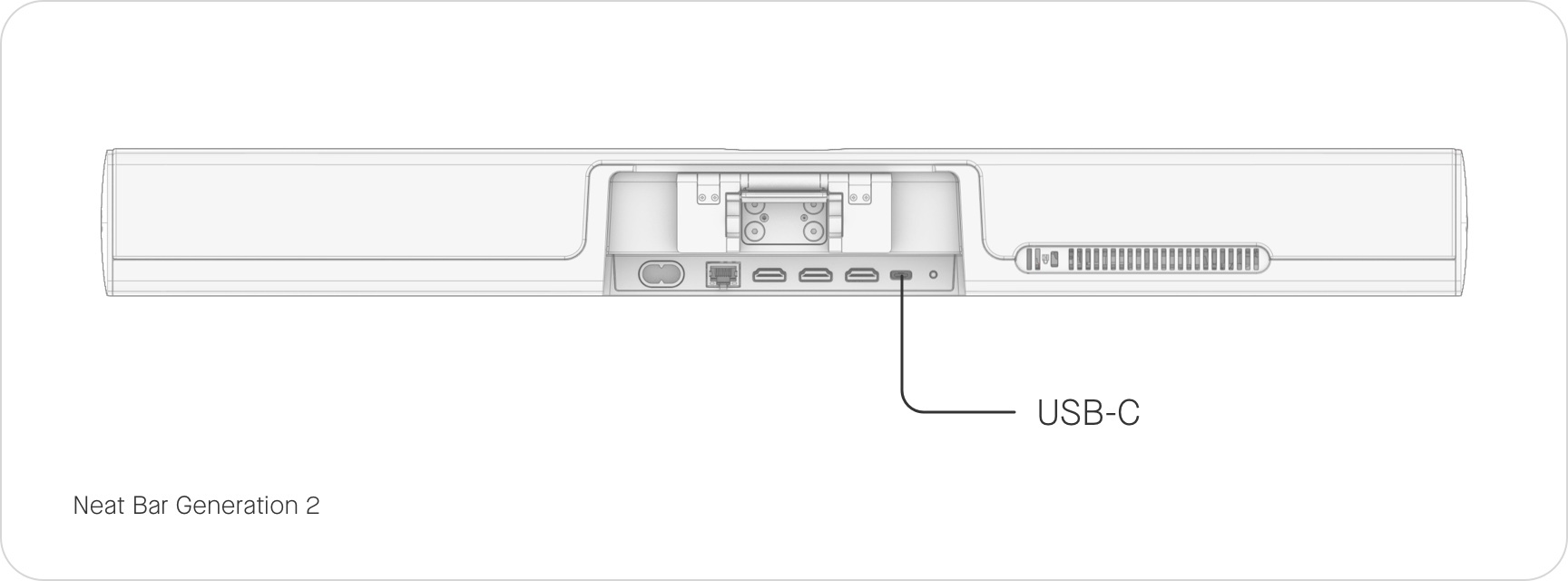
2.3.2 Double cable set up
- Connect one end of the required HDMI cable to the HDMI-in (local) port on the back of Neat Bar 2/Neat Board 50/Neat Board Pro (Figure 5) and the other end to your computer.
- Then insert a USB cable to the USB port for your chosen Neat device.
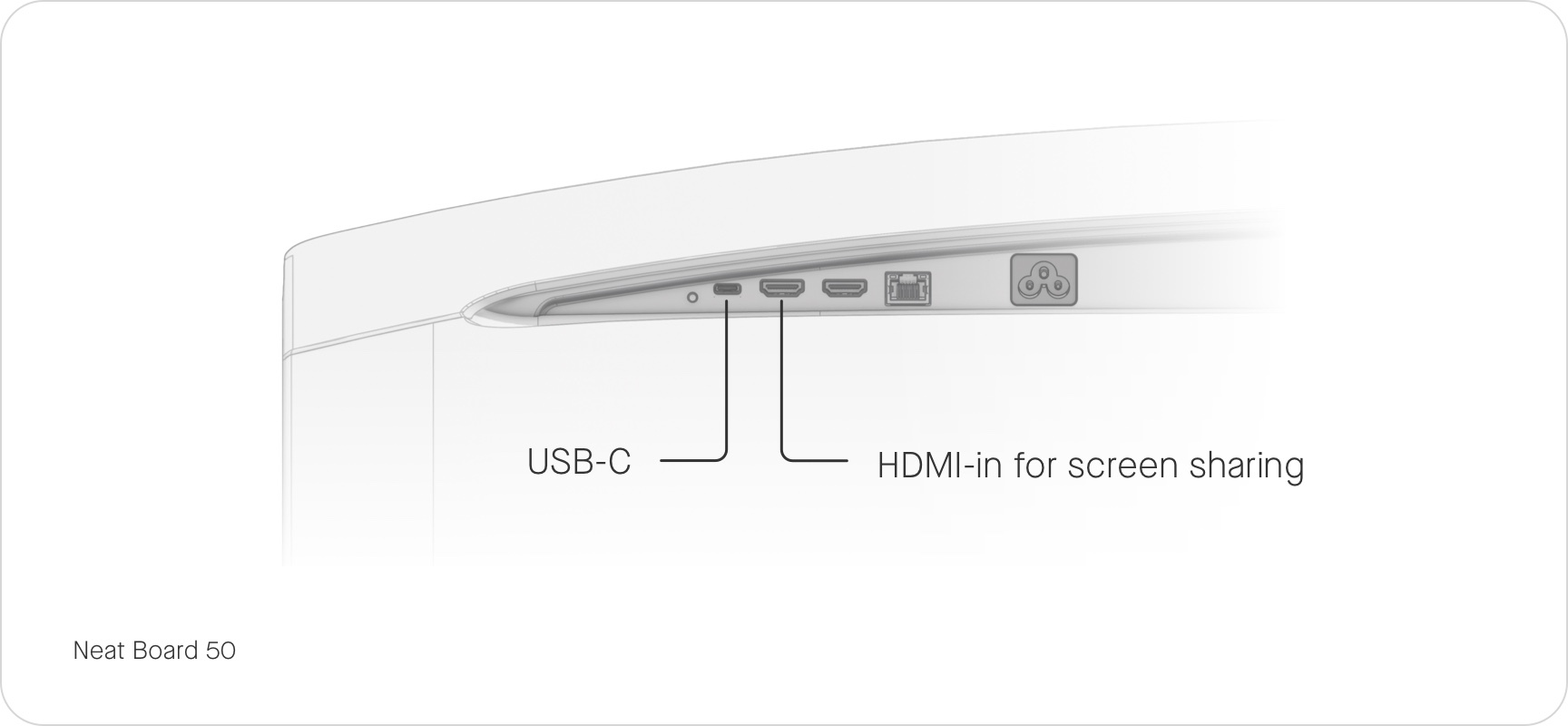
2.3.3 Customizable cable instructions for BYOD
Introduced in NeatOS 25.2, administrators can select the correct on-screen cabling instructions for BYOD setups. This ensures that the on-screen instructions in each room matches with your actual BYOD cabling setup. Customizable cable instructions can be configured both on-device and in Neat Pulse.
To configure your customizable cable instructions for BYOD:
- On Neat Pulse: go to Device settings > System > BYOD > Cable instructions on screen (see Figure 6).
or
On the Neat device’s system settings (requires a paired Pad), go to: System > USB Connectivity > Cable instructions on screen (see Figure 7). - From the dropdown, select one of the three options: USB-C (default), HDMI + USB-C, or HDMI + USB-A to match the cabling requirements of your room.
Based on this selection, the screen will display clear instructions for the user to follow.
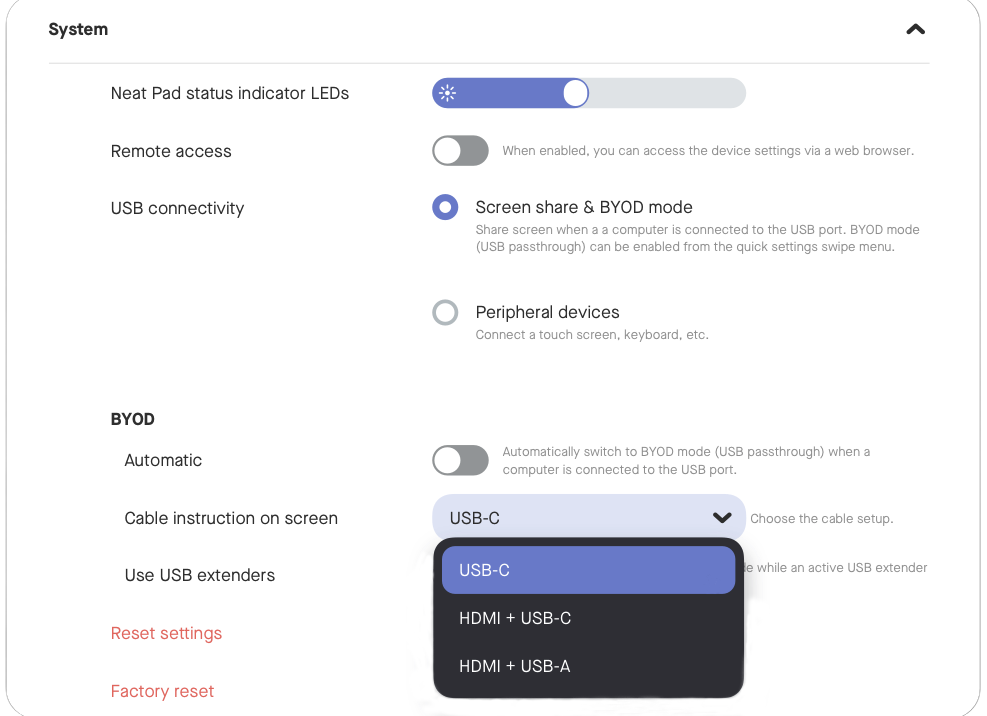
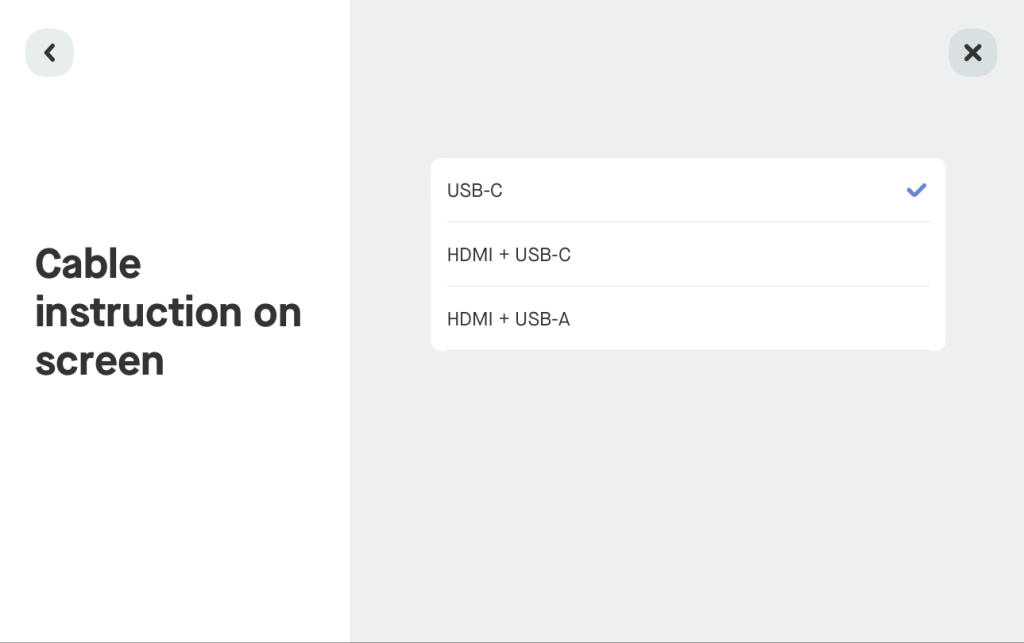
2.4 Set Neat device as your default video and audio devices
- Open your preferred video conferencing application on your computer.
- Set the default devices for the camera, microphone, and/or speakers to the Neat Device (named ‘Neat Bar…’ or ‘Neat Board…’).
- You can enable only the hardware you need. For example, use the Neat device’s camera and microphone while using your computer’s built-in speakers etc.
Note: If you are having issues with adjusting the volume on Mac devices, please review this article by Apple on adjusting sound output settings.
Platform Setup Articles
- Zoom – Changing Video and Audio Settings
- Microsoft Teams – Changing your default mic, speakers, or camera
- Webex Teams – Choose your audio and video settings
- Google Meet – Change your Video and audio settings
- FaceTime – Choose a camera or Microphone
Warning: Zoom and Microsoft Teams rooms will be “offline” from the platform’s perspective when using BYOD Mode because the application on the Neat device has been temporarily closed.
3. BYOD behavior
- Once BYOD is activated you will be able to select the mic, camera, and speaker of Neat Bar 2/Neat Board 50/Neat Board Pro from the conferencing application running on your laptop.
- Camera controls can be accessed from the Swipe left menu. If a Neat Pad is paired to a Neat Board at the Neat level it will also switch to BYOD mode and provide the camera control directly on Neat Pad.
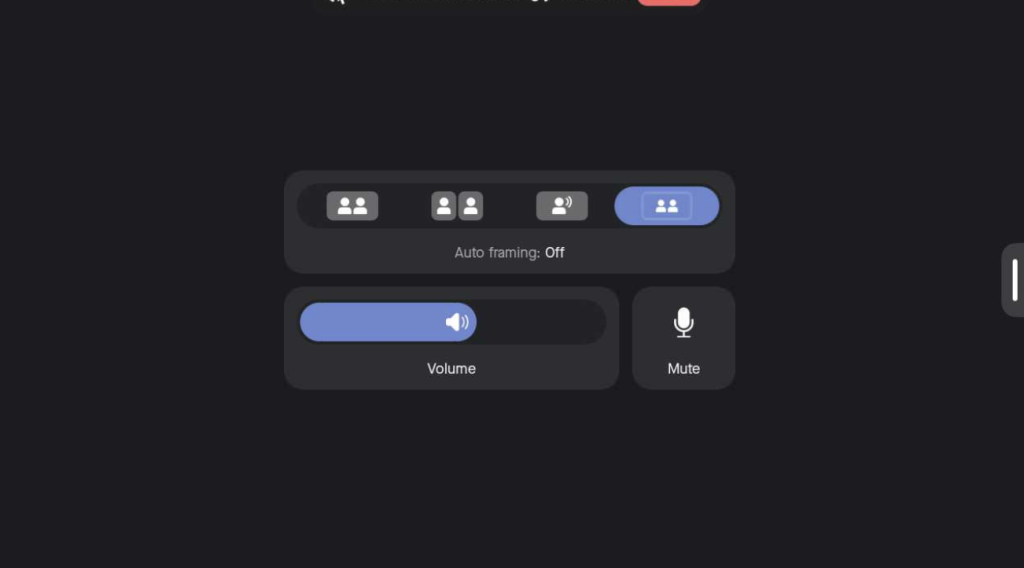
Note: BYOD Mode will be disabled if your computer goes into Standby/Sleep as Neat Board will no longer detect a signal over the cable(s) connected to your device.
3.1 Device BYOD/Content sharing behavior
This behavior only applies when Auto BYOD mode is already enabled in System Settings for Neat Bar 2/Neat Board 50/Neat Board Pro depending on cable behavior.
| Setup | In Call | Outside a call |
|---|---|---|
| Single cable (USB-C with DP) | Screen Share into the meeting | BYOD Mode |
| Double cable (USB-C + HDMI) | Screen Share into the meeting | BYOD Mode |
Enjoy the Neat experience on any platform!
With this, you should be fully set to use your Neat Bar, Neat Board 50 or Neat Board Pro with any video conferencing application!
